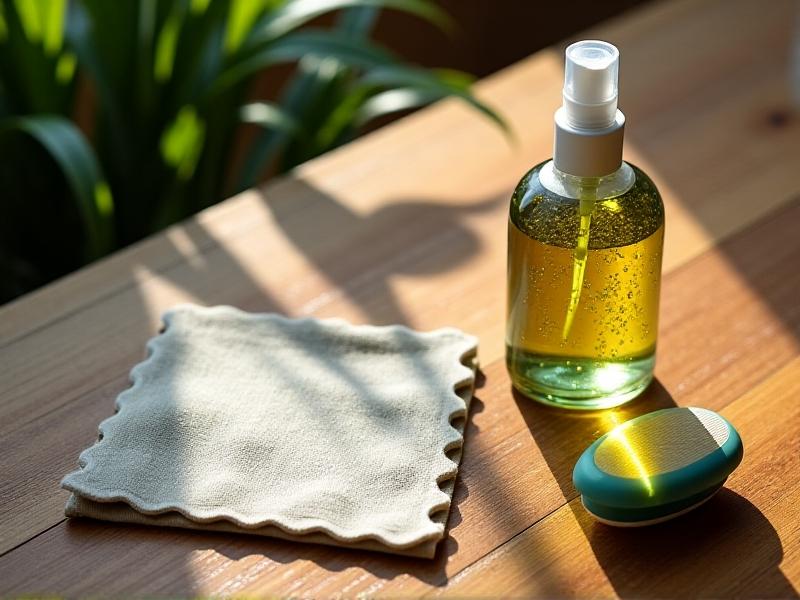Keyboard Cleaning Microbiome Management
The Hidden Ecosystem Beneath Your Fingertips: Introducing the Keyboard Microbiome
Your keyboard is more than just a tool—it’s a thriving ecosystem. Every keystroke deposits skin cells, oils, and microbes, creating a complex community of bacteria, fungi, and viruses. Studies have shown that keyboards can harbor up to 20,000 times more germs per square inch than a toilet seat, with species like Staphylococcus , E. coli , and even antibiotic-resistant MRSA making appearances. Yet not all microbes are foes; some may play roles in outcompeting harmful strains. Understanding this balance is key to managing hygiene without triggering a microbial arms race.

What Lives on Your Keyboard? A Dive into Microbial Diversity
Swab analyses reveal a surprising biodiversity. A 2023 study published in Applied Microbiology International identified over 150 bacterial species on shared office keyboards, including commensal skin bacteria like Cutibacterium acnes alongside foodborne pathogens. Fungal communities, particularly Aspergillus and Candida , thrive in crumbs trapped between keys. Environmental factors matter: gamers’ keyboards show higher microbial loads due to prolonged use and snack debris, while hospital keyboards often host opportunistic pathogens.

From Sneezes to Skin Infections: Health Risks in QWERTY Form
While most keyboard microbes are harmless, the wrong transfer can lead to trouble. A 2021 MIT ergonomics study found office workers touch their faces 23 times hourly post-typing, creating direct pathways for pathogens. Shared keyboards in coworking spaces have been linked to seasonal flu outbreaks, while greasy build-ups under keys can trigger acne mechanica—a skin condition exacerbated by friction and bacteria. Immunocompromised individuals face higher risks, as seen in a 2022 Johns Hopkins case study tracing a Pseudomonas infection to a contaminated hospital keyboard.

Sanitizing vs. Sterilizing: Cleaning Strategies That Preserve Balance
Effective cleaning targets pathogens without creating a sterile wasteland. Isopropyl alcohol (70%) remains the gold standard for disinfection, killing 99.9% of germs in 30 seconds without damaging electronics. However, overuse may dry out rubber key coatings. Emerging plant-based alternatives like citric acid or thyme oil solutions show promise—a 2024 UC Davis trial found thyme-oil wipes reduced pathogens by 92% while preserving harmless commensals. For daily maintenance, microfiber cloths remove 80% of surface debris without chemicals.

The Goldilocks Principle: Maintaining a Healthy Keyboard Biome
Balance is key. Weekly deep cleans with quarterly disinfection strikes the sweet spot for most users. Crumbs should be removed via compressed air before wiping to prevent grinding debris into switches. For mechanical keyboards, keycap removal every 3-6 months allows thorough cleaning—just avoid soaking plastic in boiling water, which warps ABS material. Oddly, some tech forums now advocate “microbial seeding” using probiotic sprays, though efficacy remains unproven. Better to focus on proven methods: handwashing pre/post typing and designating eating zones away from desks.
UV Lights and Nano-Coatings: The Tech Transforming Keyboard Hygiene
Innovations are redefining cleanliness. Portable UV-C wands like the CleanRay X claim 99.97% germ elimination in 60 seconds, though independent tests show they struggle with shadowed areas under keys. More compelling are silicone keyboard covers infused with photocatalytic titanium dioxide—activated by room lighting, they continuously break down organic matter. Logitech’s experimental BioShield coating takes inspiration from shark skin textures to repel microbial adhesion, mimicking nature’s antimicrobial strategies.
Beyond Wipes and Washes: The Future of Microbial Stewardship
Researchers are exploring smarter solutions. MIT’s Tangible Media Lab prototypes “living keyboards” with probiotic coatings that crowd out pathogens—a concept borrowed from gut microbiome therapies. Meanwhile, AI-powered air quality sensors could soon analyze keyboard particles in real time, alerting users when microbial thresholds are breached. Perhaps the boldest vision comes from Sony’s 2023 patent: self-replicating nano-bots programmed to dismantle biofilm matrices while ignoring benign species, achieving ecological balance at microscopic scales.








